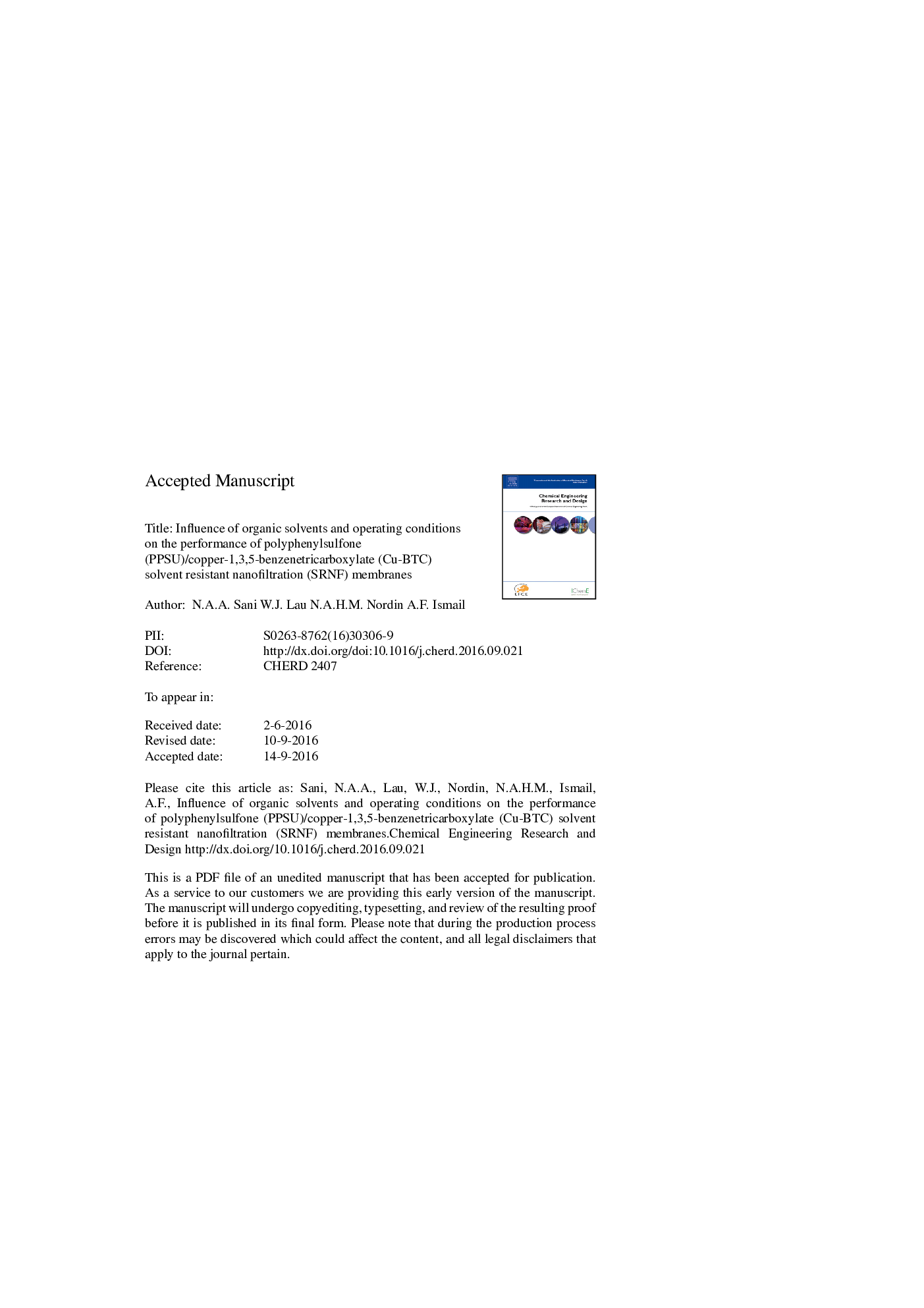| Article ID | Journal | Published Year | Pages | File Type |
|---|---|---|---|---|
| 4987457 | Chemical Engineering Research and Design | 2016 | 30 Pages |
Abstract
This article reports the influence of organic solvents (methanol, ethanol, isopropanol, acetonitrile, ethyl acetate, n-hexane and n-heptane) on the filtration performance of polyphenylsulfone (PPSU) membrane incorporated with and without copper-1,3,5-benzenetricarboxylate (Cu-BTC) nanoparticles. The pure methanol flux of the membranes and their rejection against Reactive Orange 16 (RO16, Mw = 616 g/mol) were studied and compared before and after 48 h pretreatment process using seven different kinds of solvents. The results showed that the solvent pretreatment could alter the hydrophilicity/hydrophobicity of membrane surfaces, leading to different methanol flux and dye rejection. The variation in membrane performance is mainly due to the reorganization of polymeric chains upon contact with organic solvent. On the other hand, the membrane methanol flux and dye rejection was found to vary by increasing dye concentration and operating pressure. Results showed that increasing dye concentration generally affected dye rejection rate without significantly affecting methanol flux while higher operating pressure tended to improve methanol flux by producing permeate of lower quality. In all cases, the PPSU membrane incorporated with 0.8 wt% Cu-BTC nanoparticles (PPSU/0.8Cu-BTC) showed greater separation performance than that of pristine PPSU membrane. This newly prepared composite membrane also exhibited acceptable durability and performance stability when it was tested for 24 h using dye/methanol solution.
Keywords
Related Topics
Physical Sciences and Engineering
Chemical Engineering
Filtration and Separation
Authors
N.A.A. Sani, W.J. Lau, N.A.H.M. Nordin, A.F. Ismail,
